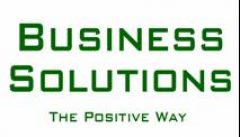Your meetings may not be productive
Meetings often waste more time and destroy more value than they actually create. Here are seven strategies beyond the agenda that help meeting leaders to stay on course when the five common time consuming characters work to derail us.
Seven Strategies Beyond the Agenda
- Begin With Purpose: Reiterate global and meeting mission and vision to set the stage. Great leaders ignite commitment and enthusiasm around the shared purpose for the organization and the group. Begin with “why” and insure value in understood before you begin.
- Role Expectation Setting: Attentive listening is the fundamental expectation of all attendees. Teach your membership how to play their appropriate role in meetings. These may include the chair, presenter, participant, guest or student. It helps for everyone to understand their role and when they are expected to participate by speaking or by listening. Empower everyone with the skills and expectation that they will actively engage in keeping the meeting on track.
- Focus: Mandate a singular focus on the agenda topics at hand. Explain this before and during the meeting and make sure that it is acknowledged. Understand that some of the time consuming characters (see below) may not have heard you.
- Chair Facilitation: Empower whomever is leading the agenda to act to keep the meeting on time and on topic. Redirect the time consumers to the appropriate time outside of the meeting. A “parking lot,” discussions on break or other meetings are often more appropriate.
- Preparation: Do not allow committee work in a general meeting. Make sure that this is done before hand with electronically distributed reports and summaries in advance so that only the highlights need to be covered in the general meeting.
- Invitation: Invite only those who have something to contribute and/or gain from the meeting.
- Be Results-Oriented: Clearly communicate the expected outcomes for each meeting. Focus on those results; the “why.” Is it to deliver information, to educate, to reach a decision, form a consensus, to entertain, to socialize and develop comradery, or other defined outcomes? Design the agenda and clarify the roles to meet those desired outcomes.
Close with action. Summarize and communicate with next-steps and expected actions. Thank everyone for their contributions. Evaluate how well you all did toward achieving the purpose of the meeting. Use this as an opportunity to learn.
Five Common Time Consuming Characters
Even with a good heart and the best of intent some people can derail a meeting if allowed. See if you recognize any of these in your next meeting. Consider how to use the seven strategies to stay on course in spite of them.
- The Pontificator: Their opinion must be heard and right now.
- The Talker: With no sense of time or the agenda clock, they love to include the gory details when they have the floor. Or they may have side conversations during the meeting.
- The Distracted (AKA The iPhone-ator): So tuned out that their potential contributions are lost. They may interrupt with their comments when least expected if at all.
- The Hijacker: Takes over the floor to focus on what they want, damn the agenda.
- The Good-Hearted: Feels that everyone should be heard when they want to speak no matter how unrelated it is to the meeting purpose.
Summary
Time is the most precious individual commodity we have and it is multiplied across all of those who are attending your meetings. I’ve presented but seven strategies. There are more. How do you achieve High-Value Purpose-Driven meetings? How do you deal with a time consumer?
